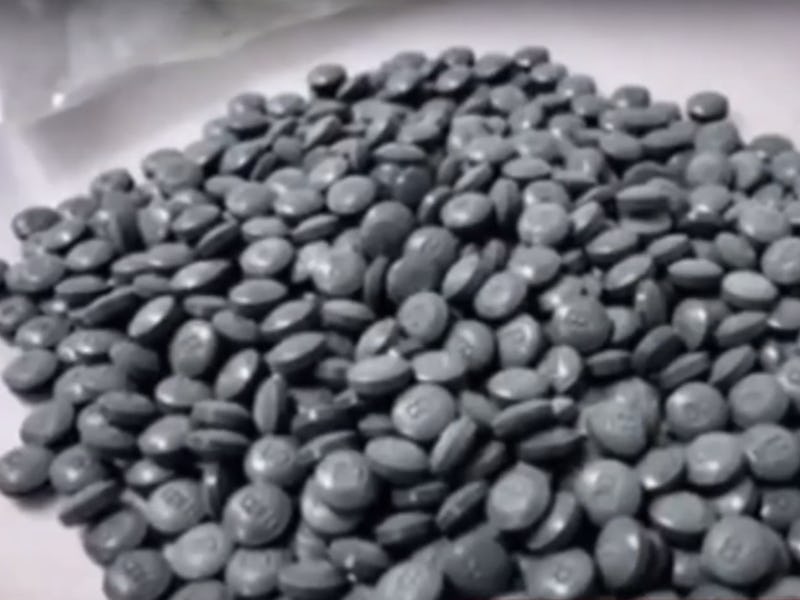Meet W-18, the Opioid '100 Times Stronger' Than the Drug That Killed Prince
The newest synthetic opioid to hit the Canadian streets is still legal stateside.

While the world mourned Prince’s death at the hands of fentanyl, a psychoactive drug said to be 100 times stronger was quietly banned north of the border. Last week, Canada’s Department of Health banned the street drug W-18, an even deadlier compound that few Americans have heard of — yet.
W-18 — also known as “beans” or “shady 80s” — was developed in the 1980s at the University of Alberta as a morphine-like painkiller. It was never marketed commercially — legally, it has no therapeutic use — but has been used recreationally in Canada and Europe over the past two years, with users chasing the pill’s euphoric, painkilling, and sedating effects. The dangers it poses have already pushed Sweden to enforce a ban at the beginning of this year. So far, it hasn’t shown up stateside, but as word of its fentanyl-like high continues to spread, there’s little reason to believe it won’t find its way across the border.
When it does, it won’t be easy for feds to spot. Canadian police have certainly struggled with it: The few samples of W-18 seized masqueraded as legitimate prescription pills like oxycodone and even fentanyl. Drug authorities have assumed that the organized crime rings responsible for bringing in fentanyl are also behind the import of W-18, which is thought to be manufactured in China, into the country. Traces of the drug have also been found in samples of other drugs sold on the streets, like heroin and cocaine.
The fact that many users don’t know they’re taking W-18 makes it all the more deadly. Pharmacology experts are locked into a debate with the government over whether the drug is really 100 times stronger than fentanyl — that’s the figure constantly quoted by federal authorities — but there’s no question that it’s dangerously strong: The biggest public health concern it poses is convincing users that their opioid tolerance is much higher than it actually is. Taking a drug they think is much stronger than fentanyl, already thought to be the most potent painkiller out there, could lead them to take even higher doses of other opioids.
As Prince’s death sadly illustrated, opioid overdoses kill by slowing the body’s respiratory systems down to a breathless crawl.
Even seasoned drug users know it’s a bad idea to fuck with the stuff: On the drug forum BlueLight.org, a user known as Tripman said: “There is no way you could possibly use this substance safely. No bingo. You’d be dead.” Echoing the sentiment, a moderator, tricomb, chimed in, saying: “This is the type of shit that should be emergency scheduled by the DEA.” That was back in 2012.
The DEA has yet to make moves. As of right now, W-18 isn’t yet on the U.S. list of scheduled substances, so anyone caught trafficking the drug won’t land in jail. In light of the rampant opioid addiction crisis wracking the country, it would be wise of the DEA to hurry the hell up.
But then again, is there really any doubt that another synthetic, cheaper drug will rise in its place? Health Canada already has its eye on W-18’s cousins, AH-7921 and MT-45, and frustration with the maddening frequency of synthetic drug development caused U.K. feds to issue an all-out blanket ban on “legal highs” at the end of May. W-18, strong as may be, is far from reaching the upper limit of drug potency. In fact, it gives us reason to believe the limit may not exist.